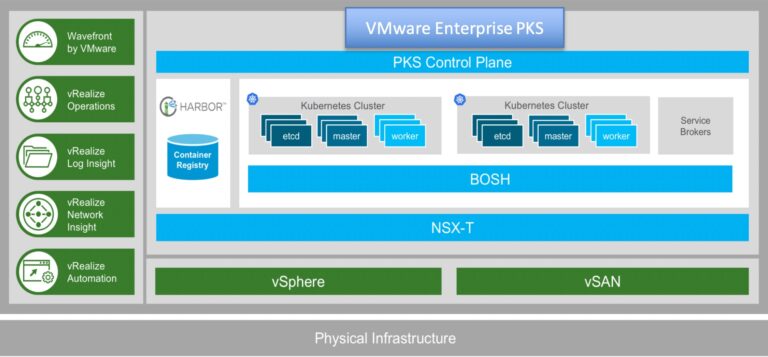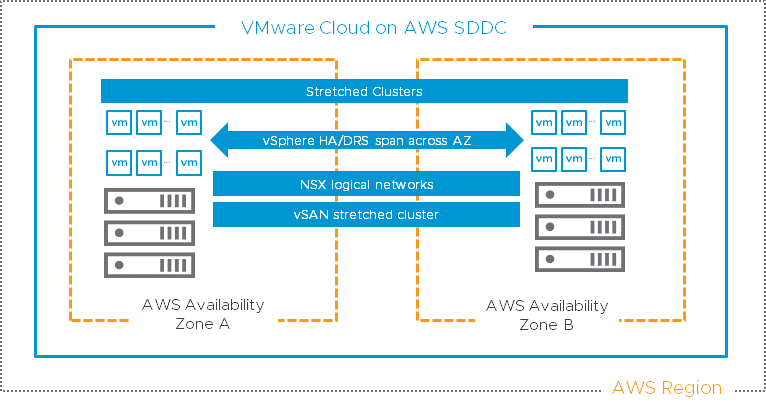
In this blog, we discuss how there are multiple benefits of Kubernetes on vSphere, such as Availability, Interoperability, Scalability, and Performance. Today, we are releasing best practices papers that detail how to architect VMware Enterprise PKS and Red Hat OpenShift on the VMware Software-Defined Data Center (SDDC).
The papers describe the technical and operational benefits of a VMware SDDC in two typical scenarios of enterprise Kubernetes deployments: a minimum deployment (usually targeted to proof of concept and development environments) and a mission-critical deployment (often targeted to production environments). This information will be of interest to enterprise Kubernetes engineers and architects, Site Reliability Engineers (SREs), VMware practitioners, and engineer managers.
In these papers, we have created an example company called Example.com to illustrate the process of adopting Kubernetes and establishing VMware best practices, which are based on years of running enterprise Kubernetes clusters on the SDDC. The scenarios illustrate in detail how features such as VMware availability zones, live migration (vMotion), high-availability (vSphere HA), smart placement (DRS), and a refined ability to manage physical layer (network and storage) through virtualization must be used for the optimal configuration of Kubernetes. Additionally, the papers details business and functional benefits of using the VMware SDDC to assure reservation grades of Kubernetes in “Platinum”, “Gold”, and “Silver” clusters through resource reservation and resource pools. On other practical points, the papers give examples on how to size Kubernetes nodes and how to over-commit resources using both VMware vSphere and Kubernetes scheduler. Example.com quickly realized that the bigger value proposition besides operational capabilities was enabling them to run a vast diversity of workloads (cloud-native workloads and traditional workloads) in production, on a single platform.
The VMware SDDC acts as a lightweight infrastructure software fabric for the datacenter across multiple areas: physical servers (vSphere), networking (NSX-T, NSX-SM, SD-WAN), storage (vSAN), multi-cloud (VMware Cloud Foundation and all six biggest public cloud providers run VMware), and containers (VMware Enterprise PKS, VMware Tanzu and Project Pacific). Without any doubt, the VMware SDDC is the best place for modern applications. Download the best practices papers here:
This is a guest post by Rafael Brito. Rafael is an Application Platform Architect with the VMware Office of CTO. He has more than 25+ years of IT experience with major focus on designing and implementing various systems involving containers, hybrid cloud, grid/HPC, and high-frequency trading infrastructure (HFT). Before joining VMware, he dedicated years at Citigroup as the global engineer lead of enterprise container services with thousands of users and mission-critical applications. Prior to Citi, Rafael was an engineer and architect of the New York Stock Exchange, and he was responsible for mission-critical applications that powered the entire US financial system. When not working with IT, you will find him dividing his time between DadOps, homebrewing, and running the Ladybird Trail in Austin, TX. He can be reached at @rafaelbrito.






